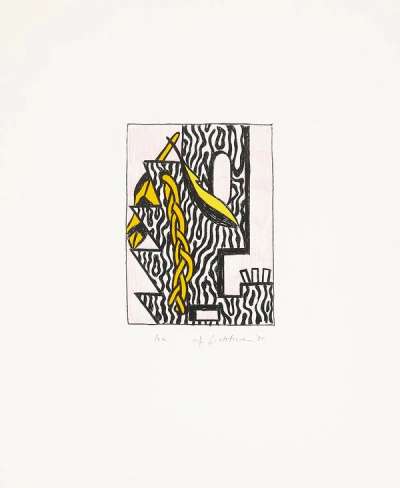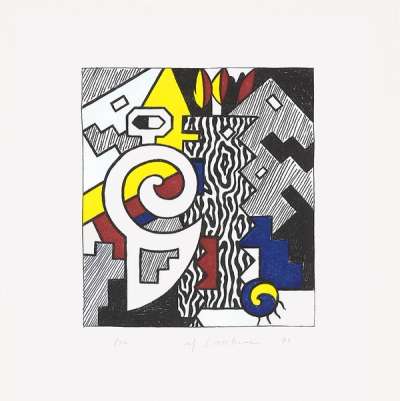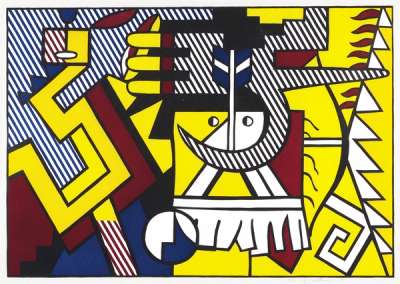
Amerind Landscape

Amerind Landscape
Tapestry
Roy Lichtenstein
Price data unavailable
AAGR (5 years) This estimate blends recent public auction records with our own private sale data and network demand.
There aren't enough data points on this work for a comprehensive result. Please speak to a specialist by making an enquiry.
Medium: Tapestry
Edition size: 20
Year: 1979
Size: H 274cm x W 335cm
Signed: No
Format: Tapestry
Track this artwork in realtime
Watch artwork, manage valuations, track your portfolio and return against your collection
Track auction value trend
Auction Results
| Auction Date | Auction House | Location | Hammer Price | Return to Seller | Buyer Paid |
|---|---|---|---|---|---|
| March 2020 | Christie's London | United Kingdom | |||
| February 2015 | Christie's New York | United States | |||
| March 2009 | Bonhams Knightsbridge | United Kingdom |
Meaning & Analysis
Roy Lichtenstein’s Amerind Landscape from 1979 is a stunning display of the artist’s visually iconic style. The transcendental work transforms colours and patterns borrowed from indigenous culture into a sculptural art piece. Bearing the knitted signature of the pop icon, this vibrant hand-woven wool tapestry belongs to a limited edition of 20.
Pop pioneer Roy Lichtenstein was a frequent visitor of the American Museum of Natural History and showed particular interest in the Hall of Northwest Coast Indians. In the early 1950s, he reproduced clichéd images of indigenous people found in American history books in the style of Cubism.
The artist’s second encounter with traditional American Indian imagery commenced in the late 1970s. At this time, Lichtenstein resided near the Shinnecock Indian reservation in Southampton, Long Island. The American Indian Theme series treats indigenous art and design more in line with the artist’s signature pop approach. The sequence reshuffles elements appropriated from everyday objects attributed to Native Americans. It reworks a broad variety of influencing source materials into flat planes and geometric surrealist compositions.
In the stand-alone wool tapestry titled Amerind Landscape from 1979, Lichtenstein presents parodic and compact forms striving for a multicoloured, yet minimalist presence. The artist applies not only appropriated patterns but also traditional materials as a tool to challenge misrepresentations of Native identity. All tribal designs are mixed together to emphasise stereotypes. The artist renders the decorative American Indian motifs into simplified cartoon versions of themselves. Ultimately, he enables these abstracted forms to communicate their own narratives and relay more authentic stories of Native American heritage.











